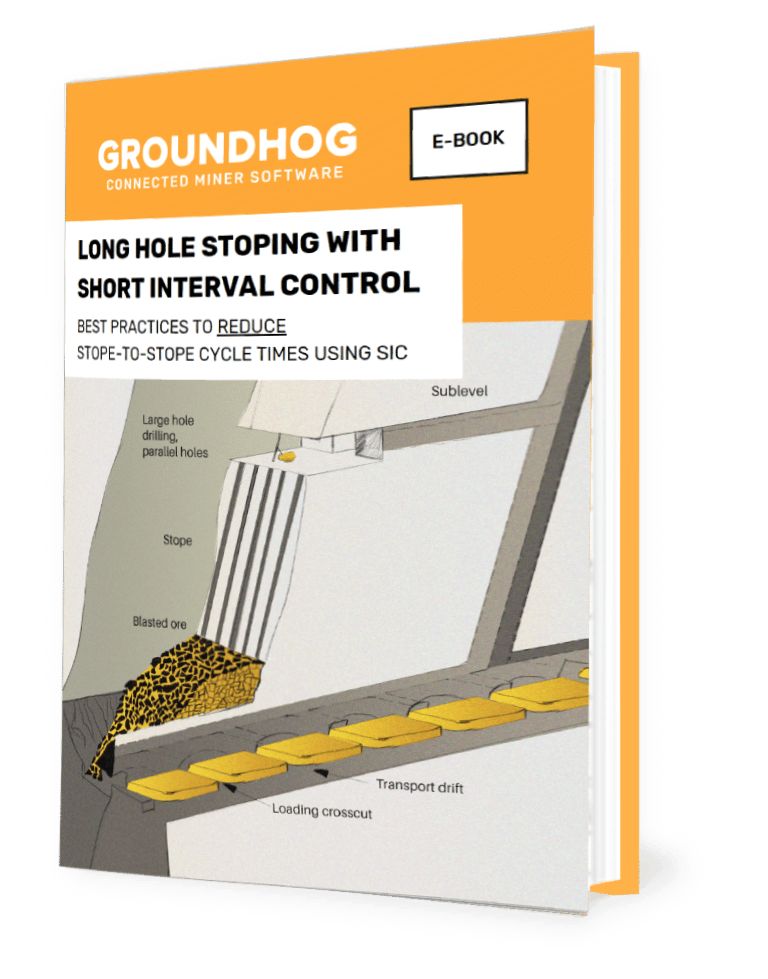INTRODUCTION
In recent times, there has been increased emphasis on Mine Digitization and Automation due to technology that has presented tremendous opportunities. It has given rise to new possibilities to change our lives for the better, turned it easier and made it more efficient. Each business is now data-driven and industries of the future are all powered by tech.
The digitalization wave is passing through every industry and the mining sector is no different. Advancements in science and technology, and a vision for sustainable future is likely to accelerate the adoption of digital technologies, artificial intelligence and analytics in the mining industry.
Mining ecosystem is undergoing a rapid technological transformation to reinvent itself. So, mines of the future would look quite different to those that we see now. Today, this massive industry is at an inflection point in which high-end technologies have potential to unlock new ways of boosting productivity.
Traditionally, the mining industry hasn’t been known for innovative smart systems due to the scale and complexity of its operations. It was recognized as a capital and labor intensive one. Since the nature of mining has stayed the same for decades, we still find some of the mines using processes and techniques that are hundred years old.
The reluctance of many mining companies to invest heavily in new technologies and move towards electrification comes from the perception that such an extreme transition will lead to loss of jobs while robotics and automation replace and reduce the need for manual labor.
Nevertheless, the good point is that the method of mining is already changing and has started to catch up more quickly to the technological revolution. The future of work in mining across multiple segments is to create workplaces that are stimulating and inspiring i.e., to have remote-controlled mines that can be monitored from anywhere.

Mine Digitization and Automation
Mine digitization and automation are the two most powerful trends of present times. To stay competitive and ahead of the curve, mining professionals will need to integrate these innovation tools into every facet of their business immediately.
Engineering and tech company like ours is specialized in the development and provision of digital solutions i.e., automation packages for mining companies, and their easy as well as successful implementation.
As digitization and automation continue to transform the industry, mining companies deploy latest technologies to enhance productivity and sustainability, increase efficiency, lower costs, minimize uneconomic material, improve worker safety and limit environmental impacts.

Digitalization
Digitalization makes it possible to control, fine tune and catalyze the whole mining operation. It can create attractive careers in safe control room environments which provide space for the employee’s expertise and creativity.
Here’s one of the most important quotes in business management “If you can’t measure it, you can’t improve it”. The quote explains why digitalization is so important for the mining industry. Basically, data is the goal (the new gold) because with real-time data, miners can measure performance and hence be able to improve performance.
Miners should have access to all information and data about processes. Now that mines are becoming increasingly connected with more robust communication systems that can transmit data and also equipment that are constantly producing data; digitalization is yielding concrete, and sometimes astonishing results.

Automation
Automation of mining equipment brings with it several potential benefits including reduced maintenance costs as the units are continuously operating at their optimal levels as well as better availability and a detailed operating record.
Most of the underground work is being mechanized and no human will work near the front anymore. The production control would take place from a bright and pleasant control room above ground or collaborative visualization room. The routine monitoring work is essentially being automated; with AI we are sure to achieve a better stability in production- at least until something completely unexpected happens.
In fact, use of artificial intelligence shifts raw materials mining from a people-oriented operation to a process-oriented one.

Major challenges
The ongoing mine digitalization and automation is presenting both exciting outcomes as well as challenges. One of the major challenges of incorporating digital technologies into mining operations is to make the workers understand how to use the technology and also that the technology works for them. According to data, 73% of companies identified skills gaps in the local labor market as the main barrier to the adoption of new technology.
The biggest challenge for any mining company is to manage the resistance to change. Thus, it is essential to make room for employees to experiment, learn, make mistakes and get comfortable with the transition and changes. Generally, younger operators are more tech savvy than their older counterparts. However, upskilling existing workers should be preferred rather than direct replacement.
Also, individuals need to be aware that digitization won’t necessarily result in job losses but instead create new roles. While this is very likely true, some job categories especially lower skill professions that rely on manual labor and repetitive, strenuous actions such as explosive charging will get automated and disappear.
In other words, Mining 4.0 will cause a reduced need for traditional labor. As innovative technology is being deployed, the mining labor pool will require different updated skill sets and expertise to achieve a satisfactory level of operational integration. Therefore, retraining the workforce will be a more favorable option.
Digitization does not happen overnight. Mining is mostly a batch process with discrete drill, blast and muck cycles that’s fragmented. In order to go fully autonomous, miners need to figure out how to go continuous first because then continuous mining will be more amenable to automate.
TIME FOR SMARTER RESPONSE TO CHALLENGES
The time for change is now! It is well known that mines are highly dynamic and complex in nature with numerous things to deal with- from people, processes, costs, equipment and topography to weather and material type. Consequently, an autonomous mine site involves a lot more than autonomous machines.
- Digital transformations are very effective, fast-paced but at the same time require the right people and culture to make them successful.
- Bringing in robots and technology doesn’t necessarily mean eliminating human workers but simply removing them from hazardous environments or dangerous activities. In reality, encouraging robotic integration will allow diversification of workforce, opening up the field to a broader range of workers with different skillsets.
- In today’s world, digital technologies also make environmental indicators’ data monitoring simple. Such practice can help the company to remain committed to environmental stewardship since there is growing world-wide concern about issues like water and air quality.
- Fewer people underground make the mine safer. With the drone, miners can do their work from an office at surface. These advanced autonomous aerial robots can go to places in an underground mine where humans can’t go safely or should not go at all.
- Investments made in sensor and monitoring technologies will assist operations in ensuring maximum output with minimal losses. AI-based predictive algorithms warn the miners and maintenance crew of potential downtimes in critical equipment, and impacts on operations.

NEW TECHNOLOGIES DRIVING THE DIGITAL FUTURE
Drone or unmanned aerial vehicle survey in an open-pit mine: Used for mine exploration, stockpile management, mine monitoring and operation planning, onsite inspections, rapid and detailed analysis of mine slopes, progress reporting, hazard identification and mitigation, etc.

Drones and 3D laser scanners for underground mine mapping: To map all underground assets with accuracy in lesser time.

Autonomous vehicles with LiDAR and image processing: Autonomous vehicle solutions enable a vehicle to perceive its environment, decide what route to take to its destination and drive it.

Flexible networks/ omnipresent networks: Technology that would offer several potential advantages in mining. Flexible network deployments will be essential in providing broad coverage delivering fast performance.

Analytics: It is the use of data and algorithms to improve decision making by generating insights. Analytics would spur the next wave of efficiency gains in ore extraction, analysis, transportation and processing. It is also expected to drive better asset utilization, boost productivity, and address material flow delays.

Artificial intelligence/ machine learning: Today, such is the importance of data that it can be considered identical to any other treasure which the company mines because data is used to plan, optimize and integrate activities across a mining value chain. Also, ML involves algorithms that improve over time through exposure to more data. Thus, AI enables mining companies to become insight driven enterprises that utilize data to derive key benefits. This helps the industry to optimize processes and transforms it into a safer, more profitable and more environmentally friendly one.
Deep learning is a subset of Machine Learning that uses neural networks with massive amounts of data to learn.
Use cases: Resource identification, scheduling to maximize NPV, predictive maintenance.

Digital twin: Creation of accurate virtual representation (3D replica) of physical assets, structures, equipment, processes, systems or even entire mining sites, stored in a representative structure on a cloud data platform. It assists the operators in understanding what is going on in the mine through modern User Interfaces and advanced visualizations, and thus, makes products better and processes more efficient.
Blockchain technology: Its role would be to promote trackability, transparency and security through open peer to peer and incorruptible data sharing.
Cybersecurity: Since, new cyber threats are growing at an exponential rate globally, mining and metals sector need to have a tactical strategy that forms part of their digital roadmap and risk management plan.
What are the benefits of these new technologies?
Some good examples are scanning mobile equipment with RFID readers for tracking purposes, notifications from mobile equipment when not operating as expected, GPS tracking used in Geofencing, laser scanning areas to validate engineering drawings, mineral exploration and mapping with AI/ML, safety and maintenance with IoT and sensors, driverless trucks, automated blast hole drilling, digital twinning to test out decisions before implementation, remote controlled systems, using drones to perform surveys, etc.
Ultimately, implementation of technology will not only enable mining companies to convert expensive and inefficient manual and mechanical processes into intelligent ones but also reduce injuries and offer improved safety, automate and improve processes, increase overall output, reduce cost per ton and much more. As a matter of fact, the benefits of automation go beyond the ones mentioned here.
WORKFORCE OF THE FUTURE MINES
Profile of the industry’s workforce is likewise being transformed due to automated technologies. Across the entire value chain of a mining operation, from truck drivers to shift managers, every worker must adapt to the modern technologies by improving their literacy in digital solutions from wearables to autonomous haulage; be open and able to work pleasantly with new colleagues, whether with robots or perhaps data scientists.
Primarily, skilled personnel such as technicians and data specialists understanding operational control, predictive maintenance and mine planning will be in high demand in near future. Miners will need to be highly skilled in computer science and engineering. Even the mining manager will need to be well versed on autonomous technology systems rather than simply understating all the mining operations. They will require a new skill set to enable them to connect disparate systems, consider and augment the algorithms being used.
Statistics, coding, managing database, system integration, analytics, data visualization, hard-core math (AI/ML), etc. will be the skills most probably appreciated in future mining industry. Just imagine that data scientists with solutions architecture, coding expertise and technology experience will one day be in demand at remote mine sites to carry out dashboarding, visualization and technology integration. This is a perfect instance of new jobs that will be created due to mine digitization and automation.
A Mining 4.0 operator will not be confined to a control room. Instead, real-time process data and the status of machinery will follow the miner as they move around the mine. The miner would be able to solve problems directly at the source by remotely interacting with other operators, experts, and customers in multi-competent teams. Production control could even be done in a ‘digital twin’ far away from the mine site. In a nutshell, the concept of Mining 4.0 visualizes an augmented miner with senses and memory extended through data-driven technology.
In both open-pit and underground mines, we firmly believe that greater connectivity equals greater safety. The environment of modern miners is being transformed. Technological landscape of pleasant workplaces will attract young talented people to tomorrow’s mining industry- a digitally-driven workforce that will leverage the industry’s future high-tech environment. Furthermore, Mining 4.0 is developing mining companies into learning organizations that will require workplace learning and continuous education.

Jobs likely to see significant declines
- Survey (replaced by drones)
- Mine Planning (displaced by AI/ML)
- Environmental Scientists (IIoT + Drones + Computer Vision)
- Reliability Engineers/ Mechanics (Fewer moving parts)
- Safety Managers/ Safety Trainers (Consolidated and in Remote Operation Centers (ROCs) /Autonomous Equipment)
Jobs likely to see significant increases
- Drone Operators (short term)
- Industrial Internet of Things (IIoT) sensor design (mineral identification, environmental monitoring, etc.)
- Highly skilled Maintenance Techs
- Network Administrators
- System Integrators
- Algorithms for planning, routing, traffic management, blend optimization
- Analytics and Reporting
A GLIMPSE OF DIGITAL FUTURE FROM MINER’S PERSPECTIVE
The digital transformation is happening across all phases of the extraction process. Technological trends are driving the future of mining. Fully automated mine was term once used to describe mine of the future, but that future is turning gradually into reality now. Full autonomy being the end goal, companies are following a staged approach starting with semi-autonomous ones since it takes time to adapt and adopt technology.
Autonomous equipment will indeed operate to a pre-determined plan 24/7 which will increase efficiency on site and totally eliminate downtime associated with breaks and shift changes. The industry is progressing so quickly in terms of edge computing, Artificial Intelligence, Machine Learning, big data analytics, automation, sensors and Internet of Things (IoT) that walking through an underground mine in next decade will see a much-changed working and operational environment.
Overall, mining is evolving exponentially with the integration of sophisticated technology; and mine of the future will undoubtedly be linked to emerging technologies, data and analytics. The more data that can be shared, the greater the possibility of finding correlations using analytics and AI/ML to identify inadequacies in applications or system-wide processes.
The mining industry is overcoming many challenges with the help of recent technology but technology alone will not be sufficient. The mines of the future will have an extensive range of needs and roles- they’ll need both the experience, knowledge and insight from on the ground and the expertise to handle the technology aspects of the business. It’s equally important to have a fundamental understanding of the real mining environment.

GROUNDHOG SOLUTIONS
GroundHog has made a very early start by providing its digital solutions to the mining industry. Some of its solutions are mentioned below.
- Peer-to-Peer network connection: An extended system of Wi-Fi having access to deep mine working faces efficiently and cost effectively. It provides miner to miner, miner to equipment and equipment to equipment connectivity.
- Internet of Things (IOT): Use of beacons and sensors to establish communication in remote drifts is one of the innovations of IOT.
- Internet of Service (IOS): Services like Fleet Management System (FMS), auto task assignment and Short Interval Control (SIC) are some holistic examples of IOS.
- Cloud Technology: Cloud computing is the “great enabler” of Industry 4.0 and digital transformation. Groundhog apps is a third-party cloud computing-based software that is user friendly, modular and scalable platform.
- Real Time Location Services: Mines keep a track of all personnel and equipment through RTLS and monitor traffic flow for safety and productivity.
CONCLUSION
Digital revolution has gone from being a buzzword to being a reality in mining. With the advent of Industry 4.0, also known as the fourth industrial revolution, the mining industry is being greatly influenced. In fact, many mining companies have started taking important steps towards the digitalized mine of the future.
The road ahead
Fast and significant changes in the mining infrastructure is changing every aspect of how we interact with the physical equipment and also among the people. While the modern era of mining is redefined by harnessing emerging technologies, it is becoming increasingly evident that technological advances will play a growing role in the mine of the future, and is set to change the way miners operate and manage tasks.
An integrated autonomous mining system will definitely be a game changer because digital system is like glue that joins all elements of a physical entity, data, knowledge components and people who envision, create, build, test and operate the facility. So, get ready to embrace the next-generation mining with GroundHog.



